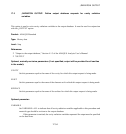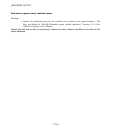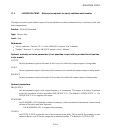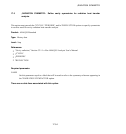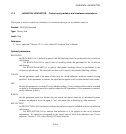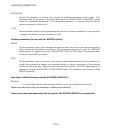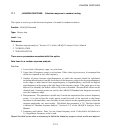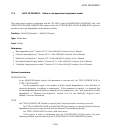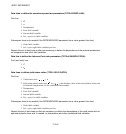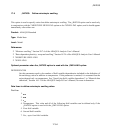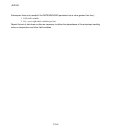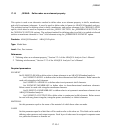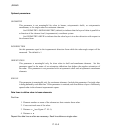*
RANDOM RESPONSE
17.7
*
RANDOM RESPONSE: Calculate response to random loading.
This option is used to give the linearized response of a model to random excitation.
Product: ABAQUS/Standard
Type: History data
Level: Step
References:
•
“Random response analysis,” Section 6.3.11 of the ABAQUS Analysis User’s Manual
• *
CORRELATION
• *
PSD-DEFINITION
There are no parameters associated with this option.
Data lines for a random response analysis:
First line:
1. Lower limit of frequency range, in cycles/time.
2. Upper limit of frequency range, in cycles/time. If this value is given as zero, it is assumed that
results are required at only one frequency.
3. Number of points between eigenfrequencies at which the response should be calculated,
including the end points, from the lo wer limit of the frequency range to the first eigenfre quency
in the range; in each interval from eigenfrequency to eigenfrequency; and from the highest
eigenfrequency in the range to the high limit of the frequency range. If the value given is less
than two (or omitted), the default value of 20 points is assumed. Accurate RMS values can be
obtained only if enough points are used so that ABAQUS/Standard can integrate accurately
over the frequ ency range.
4. Bias parameter. This parameter is useful only if results are requested at four or more frequency
points. It is used to bias the results points toward the ends of the intervals so that better
resolution is obtained there, since the ends of each interval are the eigenfrequencies where the
response amplitudes vary most rapidly. The default bias parameter is 3.0. The bias formula
is defined in “Random response analysis,” Section 6.3.11 of the ABAQUS Analysis User’s
Manual.
5. Frequency scale choice. Enter 1 to use a linear frequency scale. If this field is left blank or is
0, a logarithmic frequency scale is used.
Repeat this data line as often as necessary to define the frequency ranges in which results are required.
17.7–1
ABAQUS Version 6.1 Module:
ID:
Printed on:



